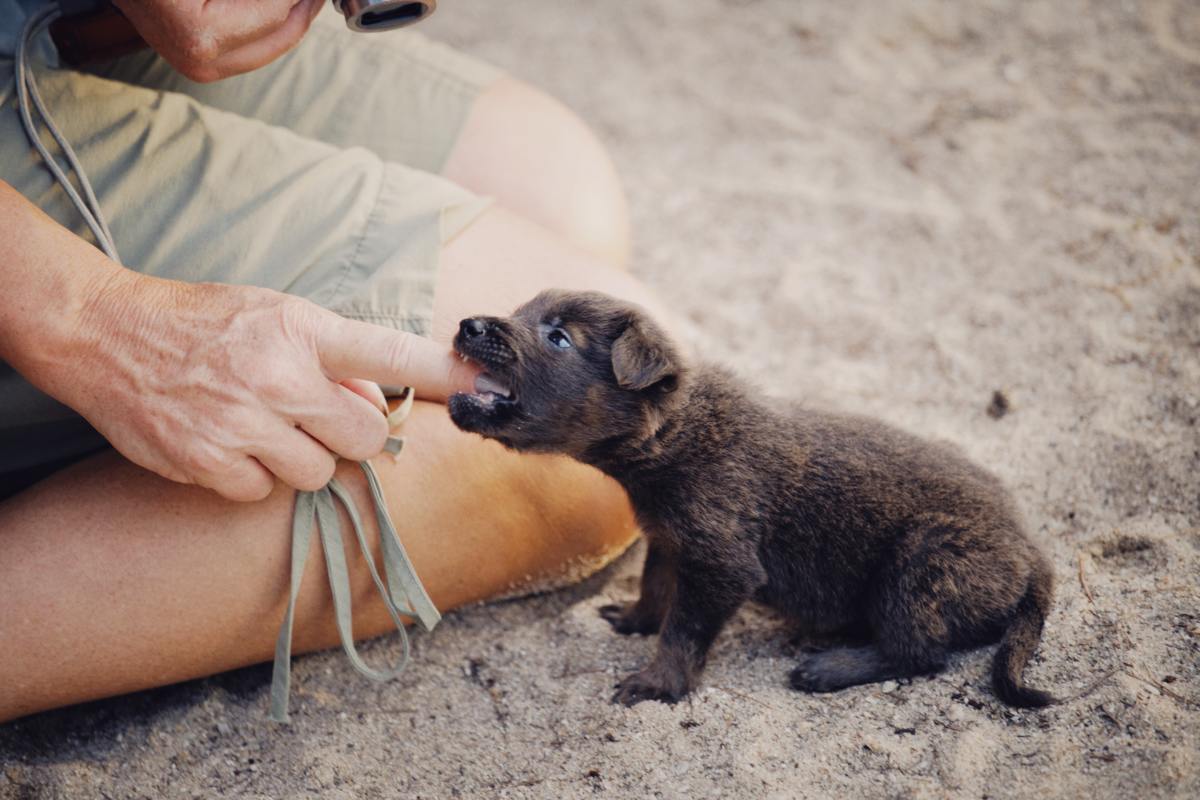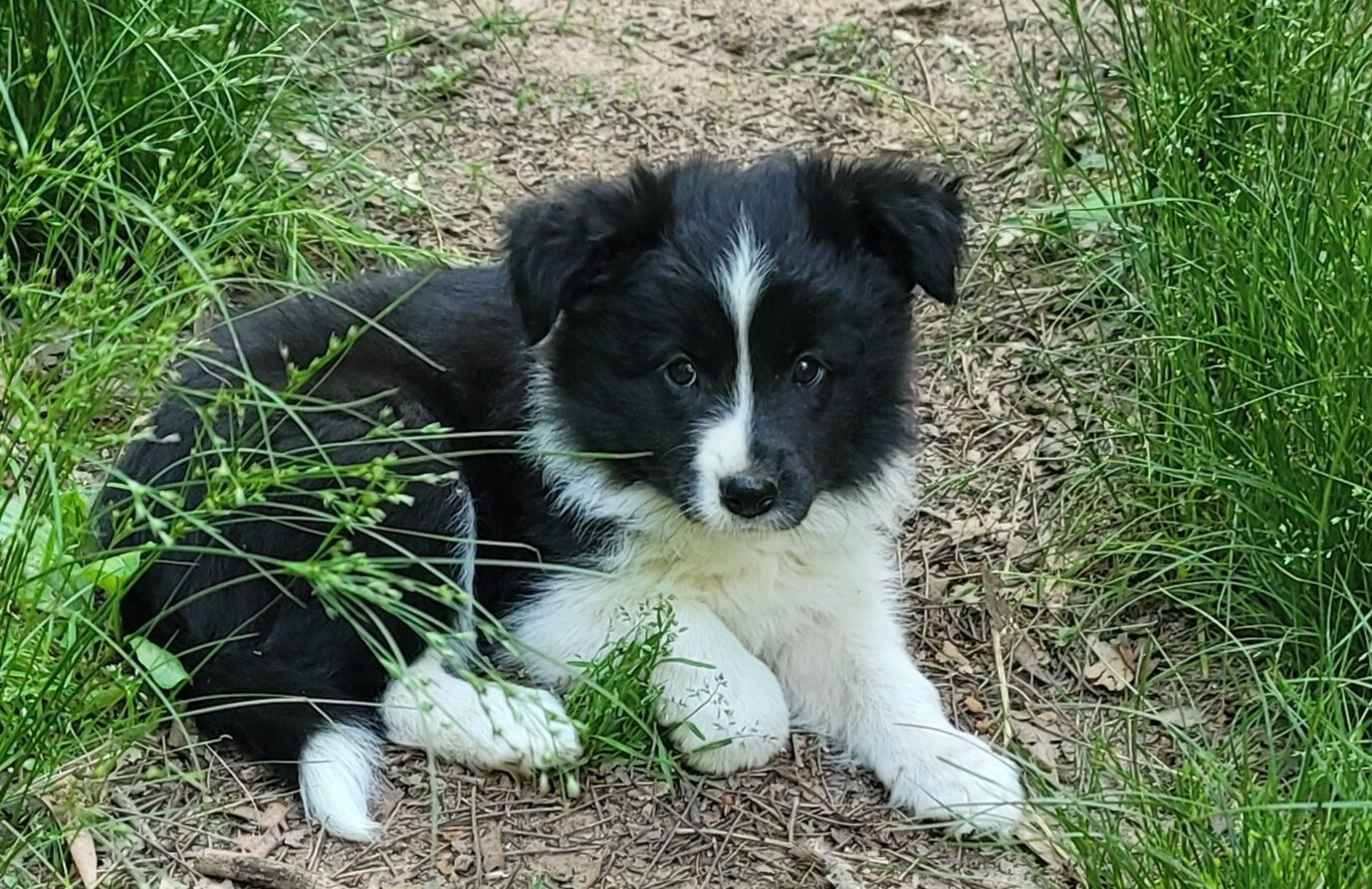Training your German Shepherd early is the best (and most fun!) way to strengthen your relationship with one another. Better training programs help teach good behavior and correct bad habits before they stick. Plus, starting early helps to prevent them from developing destructive habits and undeserved aggression. Below, we’ll tell you all about the ten best German Shepherd puppy training commands – ones that truly work!
Why Early Training Is So Important
GSD Puppies go through a critical social stage between three and fourteen weeks. This is when crate training, house training, and basic obedience work best for them. Teaching these early skills allows your puppy to turn into a well-mannered pet.
Training your German Shepherd is not that easy, better results take time. But it is worth mentioning that early training gives your pup the skills they need to become a strong-willed dog. Plus, it keeps their active mind and bodies busy, which is something they truly need!
Below are some simple steps to train your German Shepherd. Follow them to help your puppy grow into a confident, well-behaved dog!
The Basic German Shepherd Puppy Training Commands to Know
Every training starts with the basic commands. If your puppy learns the basic commands, it will become easier to get them trained with advanced commands and police commands. The following basic commands also act as a bridge of communication between you and your puppy.
1. Sit Command
Purpose: Teaches your puppy to sit on command, which is useful for controlling their behavior in various situations.
How to Train Sit Command?
- Hold a treat close to your puppy’s nose.
- Slowly move the treat upward, causing their head to follow and their bottom to lower.
- Once they sit, say “Sit” and reward them with the treat.
- Repeat this process multiple times daily until they respond consistently.
Raise your hand with your palm facing up to reinforce the command. Start by practicing this at home. Once your puppy gets it, try in different places to help them learn the behavior everywhere.
2. Stay Command
Purpose: Ensures your puppy remains in place until you give them permission to move.
How to Train Stay Command?
- Start with your puppy in the “Sit” position.
- Hold your palm out in front of their face and say “Stay.”
- Take a step back. If they stay, reward them with a treat and praise.
- Gradually increase the distance and duration of the stay.
Begin training in a calm space where your dog can focus. As they improve, gradually add distractions. Everyone in the family should use the same command and release word. This keeps things clear for your dog and prevents confusion.
3. Come Command
Purpose: Ensures your puppy returns to you when called, which is crucial for their safety.
How to Train Come Command?
- Attach a leash to your puppy’s collar.
- Get down to their level and say, “Come.” Gently pull the leash to guide them.
- When they reach you, reward them with a treat and praise.
- Practice in a secure, distraction-free area before moving to more challenging environments.
Never call your puppy if you plan to punish them, this can make them fear the command. Give them their favorite treats or toys instead. It helps them connect the command with something positive. Use a long training leash (15-30 feet) to practice this command in open spaces.
4. Down Command
Purpose: Teaches your puppy to lie down on command, which is useful for calming them or keeping them in place.
How to Train Down Command?
- Start with your puppy in the “Sit” position.
- Hold a treat close to their nose and slowly lower it to the ground.
- As they follow the treat, their body should naturally lower into a lying position.
- Once they’re down, say “Down” and reward them.
Some puppies may be reluctant to lie down initially; be patient and consistent. Practice on comfortable surfaces to encourage them to lie down willingly.
5. Leave It Command
Purpose: Prevents your puppy from picking up or chewing on inappropriate items.
How to Train Leave It Command?
- Hold a treat in your closed hand and let your puppy sniff it.
- Wait until they stop trying to get it. Once they do, say “Leave it” and give them another treat as a reward.
- Next, make it harder. Place the treat on the floor and cover it with your hand.
Use the command during walks or at home when they show interest in undesirable items. Teach them to leave different items, not just food, to generalize the command.

Advanced Training Commands for German Shepherd Puppies
Once your German Shepherd puppy learns the basics, it is the best time to train them in advanced commands. These will test their intelligence and improve obedience.
1. Heel Command
Purpose: Teaches your puppy to walk calmly beside you without pulling on the leash, promoting enjoyable and controlled walks.
How to Train Heel Command?
- Put your puppy on a leash and have them sit..
- Hold a treat in your hand and say “Heel” as you start walking.
- Reward your puppy for staying by your side.
- If they pull ahead, stop walking and wait for them to return to your side before continuing.
A shorter leash helps you control your puppy better and keeps them close. This also strengthens the heel position.
Switching directions during walks can grab your puppy’s attention. It trains them to focus on your movements, reinforcing the heel command.
Training works best when done in short, frequent sessions. Try multiple 5-10 minute sessions each day for better results.
2. Place Command
Purpose: From this training, your puppy learns how to stay in a specific spot. They remain there until you allow them to move. It’s a useful way to manage their behavior in different situations.
How to Train Place Command?
- Choose a designated spot and place a treat on it.
- Say “Place” and guide your puppy to the spot using the treat.
- Once they reach the spot, reward them and give the “Stay” command.
- Gradually increase the duration they stay on the spot.
Being consistent is key when teaching the place command. Make sure everyone in your family uses the same spot and word for the command. This avoids confusion. Start with short training sessions. As your puppy gets comfortable, slowly extend the time.
If your puppy moves before you give the signal, gently guide them back. Avoid scolding. Focus on teaching the right behavior. A visual marker, such as a mat or bed, can help your puppy connect the command with the right spot.
Use the place command during everyday moments. Meal times or when guests visit are great opportunities. This helps your puppy see how the command fits into daily life.
3. Quiet Command
Purpose: This is training your puppy to control undue barking to keep your home calm and avoid unwanted noise.
How to Train Quiet Command?
- Wait for your puppy to start barking.
- Say “Quiet” in a calm but firm tone.
- When they stop barking, reward them with a treat and praise.
- Repeat this process consistently.
Ordering your puppy to be “Quiet” will not stop them from barking. It could actually encourage it. The real solution lies in understanding what’s causing it.
Your puppy needs enough playtime and mental challenges to stay calm. Boredom often leads to barking. Also, train your family to respond the same way every time. A consistent approach makes the “quiet” command more effective.
4. Fetch Command
Purpose: These commands related to fetching things are a way to keep your GSD puppy active. It keeps their brain active, builds a stronger bond, and helps them burn energy in a healthy way.
How to Train Fetch Command?
- Start with a toy your puppy enjoys.
- Throw the toy a short distance and say “Fetch.”
- When they pick up the toy, call them back and reward them.
- Gradually increase the distance and introduce the “Drop it” command to release the toy.
Use a special reward that excites your puppy during fetch training. Pick a toy they love most. This can boost their excitement and make the game more fun. Choose a safe space for training, away from anything risky. Keep sessions fun but not too long. If your puppy won’t return the toy, try using a second toy or a tasty treat to lure them back.
5. Off Command
Purpose: The training helps your puppy stay grounded with all four paws. It prevents jumping on people or furniture.
How to Train Off Command?
- When your puppy jumps, say “Off” and turn away from them.
- Once they have all four paws on the ground, reward them with a treat and praise.
- Consistently reinforce this behavior.
Don’t push your puppy away. They might see it as play. Be consistent when teaching the “off” command. Everyone in your home should follow the same rule. Ask family and visitors not to allow jumping, even during play.
When Should You Start Training Your German Shepherd Puppy?
Your German Shepherd puppy learns best between 8 and 16 weeks of age. A new German Shepherd puppy is more willing to follow instructions at this stage. Keep these things in mind while training your new German Shepherd puppy.
Why Begin Training Early?
Start training your German Shepherd at a young age to shape good behavior. It helps your puppy grow into a calm and obedient adult. Early training also stops bad habits from forming by setting clear rules right away.
Key Focus Areas in Early Training
- Show your puppy new sights, faces, and other pets to help them grow brave and calm. It makes fear and aggression less in your GSD puppies.
- Start with easy commands like “sit,” “stay,” and “come.” These basic instructions prepare them for learning harder skills.
- Create a routine for bathroom breaks. Following a schedule makes house training easier.
Ongoing Training Beyond Puppyhood
Training should not cease after the initial months. German Shepherds enjoy when their mind and body stay active. Training beyond the basics helps a lot. Try teaching advanced commands or introducing agility exercises. Some tasks like puzzle toys are also engaging, and keeping their brain busy is key to their well-being.
Conclusion
From basic command training to advanced training, you need to stay calm and consistent. Learning from an early stage and training your German Shepherd puppy plays a big role in building a strong bond. All this helps you connect better with your pup and makes daily life smoother. This journey strengthens your relationship in many ways.
A routine can make a big difference for your puppy. It creates a feeling of safety in them and an understanding of what they should do. Each puppy learns in a unique way, so adjust your training to fit their needs. This will support good behavior and improve their happiness.
Your hard work now will bring years of joy, trust, and companionship.




